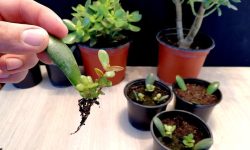Boston fern is one of the most popular indoor ferns because of its soft shape and gentle arching fronds. Many plant lovers enjoy its lush look but often struggle when trying to propagate it. The plant has a delicate root structure and responds quickly to stress from environmental changes. This makes the propagation process more challenging without proper knowledge. When you understand the correct method, the entire process becomes simple and very rewarding. Propagation allows you to expand your indoor greenery and create strong new plants with healthy growth from the beginning.
This article provides a detailed and science-based guide to help you propagate Boston fern successfully. You will learn essential principles that support fast root development and stable growth. Each step is explained clearly so you can apply the techniques with confidence. The content focuses on practical methods that follow the natural growth behavior of this fern. When you understand how it divides and recovers, you increase your success rate significantly. This forms the foundation for strong new plants that can thrive for many years.
Understanding the Basics Before You Start Propagating

Boston fern has a unique growth pattern that influences the success of the propagation process. The plant grows from a dense root system that expands outward through thick rhizomes. These rhizomes continue to divide and produce new fronds when the environment remains stable. You must understand these natural rhythms before attempting any propagation method. This understanding helps you reduce stress on the plant and increase survival for new divisions. A healthy mother plant always produces stronger offshoots, so preparation begins with proper care.
You should evaluate the overall health of your Boston fern before making any cuts. The fern must have firm roots, vibrant fronds, and no signs of pests or dehydration. A stressed fern does not recover well after division, and its growth slows down. Choose a plant that shows consistent new fronds, as this indicates strong internal energy. The goal is to use sections that already contain active growth points. These sections establish faster and adapt better to new soil or containers.
Proper timing also impacts propagation success, even though Boston fern can technically be divided year-round. The plant responds best during warm and mildly humid months when growth is naturally active. This period supports rapid root repair and makes the transition smoother. Avoid propagating during cold months or periods of heat stress, as the fern struggles to rebuild damaged roots. You should also ensure the humidity level remains stable during the process. Boston fern uses moisture in the air to stabilize new tissue and maintain healthy cellular activity. When you respect these basic conditions, your propagation work becomes easier and more predictable.
Preparing the Mother Plant for a Successful Propagation
Preparing the mother plant is an essential step that shapes the entire propagation outcome. A Boston fern only divides well when its root ball is dense, hydrated, and full of active growth. You should water the plant thoroughly one day before dividing so the roots become flexible and less prone to breakage. This hydration also helps the fronds maintain strength during the transition. A well-watered plant responds calmly to physical stress, which is crucial for generating new roots after separation. This preparation ensures the mother plant stays stable and strong after division.
You should remove any damaged fronds or dry roots before you begin working with the plant. These weak sections drain energy and slow down the recovery process. Healthy fronds allow the plant to photosynthesize steadily and support the young divisions. Examine the root ball carefully to check the density and color. A strong Boston fern root system shows thick, pale rhizomes and a firm structure. If the soil is too compacted, loosen it slightly so you can see natural separation lines. These lines help you identify where the plant wants to divide on its own.
The environment around the plant must also be controlled before propagation. Choose a clean workspace with moderate light and no strong drafts. A humid room is ideal because Boston ferns absorb moisture through their fronds. Place a tray of water nearby to increase humidity if needed. Gather clean tools and disinfect them to prevent fungal spread. A stable environment keeps the plant from losing unnecessary moisture and helps the divided sections adapt faster. When you provide these careful conditions, the mother plant stays healthy and continues producing new growth without interruption.
Dividing the Root Ball Correctly for Healthy New Ferns
Dividing the root ball is the most crucial step because it determines how well each new plant will develop. A Boston fern has a compact mass of rhizomes intertwined with fine roots, and these must be separated with care. Begin by removing the plant from its pot and gently shaking off loose soil so you can see the natural structure. You should look for clear clusters of fronds that rise from distinct points along the rhizome. These clusters indicate natural division zones that split without excessive tearing. When you follow these natural boundaries, each new section keeps enough roots to sustain immediate growth.
Once you identify the division points, you should separate the plant using a gentle but firm motion. Some divisions come apart by hand, while others require a clean blade. Make slow and controlled cuts so you avoid crushing the rhizomes. Each new piece must contain at least one strong crown with several fresh fronds. This crown anchors the growth process and triggers new root formation. If a section has too few roots, it will struggle to absorb water and may collapse after repotting. You should also trim any dark or mushy roots to prevent fungal spread that can affect the new plants.
After separation, place the divided sections in a shaded and humid environment before potting them. This short resting period reduces shock and helps the cut surfaces dry slightly. Boston fern responds well to gentle handling during this stage, and humidity plays a major role in stabilizing the tissues. You should cover the divisions loosely with a transparent dome if the air is too dry. This prevents moisture loss while allowing airflow. When the divisions remain firm and hydrated, they are ready to move into fresh soil. Careful division ensures that each plant starts its new life with strong structure and balanced energy.
Choosing the Right Soil Mix to Support Fast Rooting
The soil mix you choose plays a major role in how quickly your new Boston fern divisions establish strong roots. This plant prefers a medium that holds moisture yet drains well enough to prevent root suffocation. You should aim for a mix that feels light and airy when handled. A balanced combination often includes peat for moisture retention and perlite for increased airflow. This structure keeps the roots oxygenated during their early development. When the soil provides both moisture and movement, the fern can rebuild its root tips without stress. A healthy rooting environment begins with the right texture and consistency.
You should avoid heavy garden soil or dense mixes that compress easily. These materials restrict airflow and trap excess water around the rhizomes. Poor airflow slows new growth and increases the risk of fungal activity. A Boston fern thrives when the roots experience steady moisture without standing water. Mixing in a small amount of fine bark can also help improve drainage and support microbial balance. Microbial stability is important because it prevents harmful organisms from overwhelming the young roots. The soil should feel moist but never soggy, and you should check the texture before placing the divisions inside.
Before potting the new sections, you should lightly moisten the soil so it forms an even base. Dry soil absorbs water from the roots and stresses the new plants. A slightly damp mix helps maintain hydration while allowing the fern to settle naturally. When you place each division into the pot, keep the crown slightly above the soil surface to avoid rot. Press the soil gently to eliminate air pockets without compressing the mix. Proper soil preparation allows the fern to anchor quickly and ensures the roots can expand without resistance. This careful approach builds a stable foundation for long-term growth.
Potting the Newly Divided Ferns for Strong Early Growth
Potting the newly divided Boston ferns is a delicate stage that influences their early development. You should select pots that allow enough space for roots to expand without drowning in excess soil. A pot that is too large holds moisture unevenly and slows establishment. Choose containers with several drainage holes to encourage steady water movement. This prevents water from pooling at the bottom and damaging fresh root tissue. When you prepare the pot, fill the lower section with the soil mix you created earlier. This creates a supportive base that helps the division sit upright and secure.
You should position each fern so the crown rests slightly above the soil surface. This prevents moisture from collecting around the base and reduces the risk of rot. Hold the plant steady as you add more soil around the roots. The goal is to support the rhizomes without applying pressure that could restrict early growth. Once the division stands firm, lightly tap the sides of the pot to settle the soil. This helps fill minor gaps without causing dense compaction. After positioning the plant, water it gently to help the soil settle further. The water also provides initial hydration that the roots need during the adjustment period.
Once potted, the divisions should rest in a shaded and humid location. Boston ferns dislike direct sun and intense airflow during recovery. A stable environment with mild light encourages steady root activity. Humidity protects the fronds from dehydration and helps the plant maintain internal balance. You can place a water tray nearby to increase moisture in the air. Avoid fertilizing at this stage because new roots are sensitive and can burn easily. Focus on stability and consistent moisture. When the plant remains firm after a few days, it indicates that the roots are beginning to adapt. This careful approach ensures strong early growth and long-term health.
Creating the Ideal Humidity and Temperature for Rapid Establishment
Boston fern divisions adjust faster when the environment mirrors their natural habitat. This plant evolved in warm and humid forests where moisture stays in the air throughout the day. Newly divided sections rely heavily on this humidity to maintain cellular stability. You should aim for a consistent level that feels moist but not overwhelming. A humidity range between moderate and high supports leaf hydration and prevents stress. When the air remains stable, the fern diverts energy into growing new roots rather than repairing damage. This balance creates the perfect conditions for rapid establishment.
Temperature also affects the recovery process. Boston ferns grow best in mild warmth and decline quickly under extreme heat or cold. You should keep the plant in a room with gentle airflow and stable temperatures. Sudden drops slow metabolic activity and can weaken the new fronds. Excessive heat speeds water loss and forces the plant into survival mode. A mild and predictable climate helps the divisions regulate internal processes without struggle. You should monitor the environment during the first weeks because fluctuations undo previous efforts. Consistency is the key factor that determines how fast the fern settles into its new pot.
To increase humidity, you can place the fern near a water tray or use a light misting routine. These methods create a gentle moisture blanket without soaking the fronds. Avoid using enclosed covers for long periods because they trap stale air. Stale air encourages fungal growth and interferes with the fern’s natural breathing. A balanced approach keeps the air fresh while maintaining the humidity needed for young plants. When the fern stands firm and shows early signs of new fronds, you know the environment is working. Proper humidity and temperature create the ideal foundation for long-term strength.
Watering Techniques That Protect Young Roots and Encourage Steady Growth
Watering newly divided Boston ferns requires precision because young roots respond strongly to moisture changes. You should water slowly and evenly so the soil absorbs moisture without becoming waterlogged. A gentle stream allows the mix to settle around the roots while keeping the texture loose. When the soil stays consistently damp, the roots regenerate steadily and extend into open spaces. Dry pockets or sudden soaking can shock the divisions and slow growth. Your goal is to maintain moisture that feels balanced and stable throughout the pot.
You should check the soil regularly by touching the upper layer. If it feels slightly dry, it is the right time to water again. Boston ferns dislike dryness and struggle when the mix loses moisture too quickly. However, they also decline in saturated conditions that suffocate the roots. Finding this balance protects the plant from dehydration and disease. Use room-temperature water because cold water slows biological activity. Warm water encourages steady nutrient movement and keeps the roots active. The plant relies on predictable moisture, and every watering session supports its internal rhythm.
During the early weeks, the plant benefits from misting as a supplemental method. Misting refreshes the fronds and slows moisture loss without flooding the soil. This creates a gentle support system while the roots expand. Avoid misting late at night because lingering moisture invites fungal issues. Morning or early afternoon is ideal because the fronds dry at a safe pace. Over time, you will see the plant respond with stronger fronds and brighter color. These signs indicate that your watering routine matches the plant’s natural needs. Careful watering builds resilience and supports long-term development for every division.
Light Requirements That Help New Divisions Grow Strong and Stable
Light plays a major role in the early development of newly divided Boston ferns. These young sections need enough light to support steady photosynthesis but not so much that the fronds burn. Boston ferns evolved under the canopy of dense forests where light is filtered and gentle. You should place the divisions in a spot with bright but indirect light. This level encourages stable growth without causing leaf stress. Direct sunlight can scorch the fronds and weaken the plant during its sensitive recovery period. A balanced light environment allows the fern to focus on building stronger roots.
You should monitor the fronds daily to understand how they respond to the current lighting. If the color fades or turns pale, the plant may need a slightly brighter location. Pale fronds indicate insufficient energy production. On the other hand, if the edges turn dry or crisp, the light may be too intense. Adjust the plant’s position gradually so the divisions adapt without shock. Boston ferns do not react well to sudden changes, and the root system mirrors this sensitivity. A gentle shift in lighting supports internal stability and helps the plant maintain healthy rhythms. Consistent lighting builds confidence in the new environment.
Artificial light can also support Boston fern divisions when natural light is limited. A soft grow light placed at a safe distance provides the right balance of brightness without heat stress. You should run the light for several hours each day to mimic natural patterns. This routine strengthens the growth cycle and prevents irregular development. Avoid placing the light too close because young fronds cannot handle intense heat. When light remains steady and predictable, the plant produces fresh fronds faster. This signals that the fern is adapting well and forming a stable foundation for long-term health.
Supporting Early Root Development With the Right Fertilizing
Fertilizing newly divided Boston ferns requires a gentle and strategic approach. Young roots are sensitive and cannot handle strong nutrient concentrations. You should wait until the plant shows signs of new fronds before adding any fertilizer. These new fronds signal that the divisions have begun to stabilize and can process nutrients safely. A diluted liquid fertilizer works best during this stage. It moves easily through the soil and reaches the roots without overwhelming them. Gentle feeding encourages internal strength and supports early structure formation. This careful timing prevents nutrient burn and protects the fern during its delicate phase.
When you start fertilizing, choose a balanced formula that supports both root and leaf development. A mild blend encourages even growth across the entire plant. You should apply the fertilizer during watering to ensure even distribution. This method keeps the soil texture stable and prevents concentrated pockets that could harm the roots. Overfeeding creates chemical stress and slows progress, so moderation is essential. A predictable schedule maintains consistent nutrient availability. This consistency reinforces the fern’s natural rhythm and helps it grow with confidence. You should always observe the plant’s response to make subtle adjustments.
Environmental conditions also influence how well the plant absorbs nutrients. Warm temperatures and stable humidity improve nutrient movement through the tissues. You should fertilize during mild periods when the plant is most active. Avoid feeding during heat waves or cold spells because the fern cannot use nutrients efficiently under stress. Slow and steady feeding builds internal reserves without disruption. Over the next weeks, you will see improved frond color and firmer structure. These signs confirm that the fertilizing method supports root development and early growth. A patient and gentle strategy leads to strong long-term health.
Managing Transplant Shock to Keep New Divisions Stable
Transplant shock is a common hurdle for newly divided Boston ferns, and understanding how to manage it ensures steady recovery. The plant experiences shock when its root system adjusts to a new environment. You should maintain stable conditions during the first weeks to reduce stress. Keep the plant in indirect light and avoid sudden temperature changes. A calm environment helps the fern regulate internal moisture and energy. When conditions remain predictable, the plant focuses on repairing roots rather than defending against stress. This stability supports smoother adjustment and faster establishment.
You should observe the fronds closely during this period. Wilting or pale fronds indicate that the plant is still adapting. These signs do not always mean the division is failing. They show that the fern needs time to balance water movement and rebuild structure. You should avoid overwatering when this happens because excess moisture causes more stress. Allow the soil to stay consistently damp without becoming heavy. Support the plant with gentle misting to maintain leaf hydration. This approach eases surface stress while the roots work beneath the soil. Careful observation helps you react calmly and protect the young plant.
Airflow also contributes to how well the fern overcomes transplant shock. Gentle air movement prevents stagnant conditions that encourage fungal activity. However, strong drafts dry the fronds and disrupt moisture balance. You should choose a location with soft circulation to maintain freshness. Over time, the plant will show clearer signs of recovery through firmer fronds and brighter color. New growth often appears when the root system stabilizes. This growth marks the transition from survival to active development. Managing transplant shock with patience and consistency gives your Boston fern the strong start it needs.
Monitoring Early Growth and Identifying Healthy Development
Monitoring early growth helps you understand how well each Boston fern division is adapting. Young plants communicate their condition through frond color, firmness, and posture. You should look for steady upright fronds that feel hydrated and flexible. These traits show that the roots are establishing and supporting internal structure. Slow but consistent growth patterns are normal during the first weeks. You should not expect rapid expansion because the fern prioritizes root development. When the plant maintains stable appearance, it signals balanced internal processes and successful early establishment.
You should also observe the soil to ensure it remains in the ideal moisture range. If the soil dries too quickly, the roots may shrink and slow their activity. If it stays wet for too long, the plant may struggle to breathe. A balanced cycle keeps the roots active and prevents stress. Check the crown area as well because this section reveals early signs of new fronds. When small shoots appear, it confirms that the plant is gaining strength. You should support this stage with stable humidity and gentle light. These conditions nurture early tissue formation and protect growing fronds.
Tracking the plant’s progress helps you identify issues before they escalate. Yellow or limp fronds indicate moisture imbalance or poor lighting. Brown tips suggest environmental stress, while drooping may signal weak root attachment. You should adjust the environment gradually when you see these signs. Small corrections make a big difference during early development. When the plant responds with firmer fronds and brighter color, your adjustments are working. Early monitoring ensures every division moves toward stable and healthy growth. This attention builds a strong foundation for long-term success.
Common Mistakes to Avoid When Propagating Boston Fern
Avoiding Over-Division and Rough Handling
Dividing the root ball too aggressively is one of the most common mistakes during Boston fern propagation. Many growers break the plant into very small sections because they believe smaller pieces root faster. This approach weakens the fern and reduces the chance of survival. Each division needs a firm crown, a cluster of healthy fronds, and enough root mass to absorb moisture. When a division lacks structure, it struggles to balance hydration and energy. Rough or rushed handling also creates internal stress that slows recovery. You should always divide along natural growth lines for the safest results.
Another issue occurs when growers use dull tools during separation. Dull blades crush the rhizomes instead of creating clean cuts, and this increases the risk of infection. Contaminated tools introduce harmful bacteria that interfere with early root formation. You should disinfect your tools before each cut to protect the divisions. Clean cuts help the plant seal wounds quickly and prevent rot. Careful preparation reduces shock and builds a safer environment for new growth. Avoiding rough handling ensures each division begins its new life with stable internal strength.
Avoiding Incorrect Lighting and Watering
Improper lighting is another major issue that many growers overlook. Newly divided Boston ferns cannot handle direct sunlight, even for short periods. Intense light burns young fronds and removes moisture faster than the roots can replace it. This leads to dehydration and early decline. You should place the divisions in bright but indirect light to mimic their natural habitat. Filtered light supports gentle photosynthesis without creating stress. Consistent lighting helps the plant regulate energy and recover at a steady pace. This balance encourages the divisions to establish strong internal rhythms.
Overwatering is also a common mistake that slows early root development. Many growers misread wilted fronds as a sign of dryness, but wilting after division often comes from shock. Adding more water makes the problem worse by suffocating the roots. Saturated soil traps oxygen and weakens root tips. You should water only when the top layer begins to dry slightly. Damp but airy soil creates the ideal conditions for new root formation. Controlled watering protects the plant from rot and helps it adapt more quickly. Avoiding these mistakes keeps the fern stable and responsive.
Avoiding Early Fertilization and Poor Environmental Control
Fertilizing too early is another frequent mistake that harms newly divided Boston ferns. Many people think that nutrients will boost early growth, but young roots cannot process strong fertilizer. Early feeding burns delicate tissues and slows development. The plant must first regain stability before receiving any nutrients. You should wait until new fronds emerge because they signal strong internal activity. A balanced and diluted fertilizer works best once the plant begins active growth. Feeding at the right time supports healthy tissues without causing stress.
Poor environmental control also creates challenges for new divisions. Low humidity dries the fronds and weakens the plant’s ability to regulate water. Stagnant air creates conditions that favor fungal problems and slow recovery. You should maintain moderate humidity and gentle airflow to support stable development. Avoid placing the plant near vents, heaters, or drafty windows. These conditions disturb internal balance and force the plant into survival mode. A calm and consistent environment allows the fern to rebuild roots and strengthen new tissues. Preventing these mistakes ensures long-term health and faster establishment.
FAQs About How to Propagate Boston Fern
How long does it take a Boston fern division to start growing?
A Boston fern division usually begins showing new growth after three to five weeks. The timing depends on humidity, temperature, and root health. Stable moisture and indirect light encourage faster development. Once the roots settle, new fronds begin to unfurl steadily, signaling strong early establishment and successful propagation.
Why do my newly propagated Boston ferns look wilted?
Wilting is common after division because the roots need time to adjust. The plant may lose moisture faster than it can absorb it. Keep humidity stable and avoid overwatering. Provide gentle light and consistent warmth. Once the roots recover, the fronds usually regain firmness and healthy color within several days.
Can I propagate a Boston fern using fronds instead of roots?
Boston ferns cannot be propagated from fronds alone because they require rhizomes for regeneration. The plant depends on root structures and crown tissue to form new growth. Dividing the root ball is the only reliable method. Healthy rhizomes allow the fern to rebuild tissues and produce new fronds successfully.
Why are the tips of my divisions turning brown?
Brown tips often result from low humidity, excessive light, or inconsistent watering. Newly divided ferns are sensitive and need stable moisture in both soil and air. Reduce direct light, mist lightly during the day, and maintain warm conditions. Once the environment stabilizes, new fronds should grow without browning.
When can I fertilize a newly propagated Boston fern?
You should fertilize only after the plant produces new fronds, which shows root activity has stabilized. Early fertilizing damages young tissues and slows development. Use a diluted liquid fertilizer during regular watering. Gentle feeding supports steady growth and strengthens new fronds without overwhelming the recovering root system.
Conclusion
Propagation gives the Boston fern a fresh start and allows every division to grow with renewed strength. When you follow the right steps, the plant adapts smoothly and develops healthy roots that support long-term growth. Consistent humidity, gentle light, and patient care shape the entire process. Each division becomes stronger as it settles into its new environment and prepares for future fronds. With proper attention, your fern will reward you with lush, vibrant foliage that reflects the effort you invested. Successful propagation is not only a technique but also a satisfying journey that deepens your connection with the plant.






